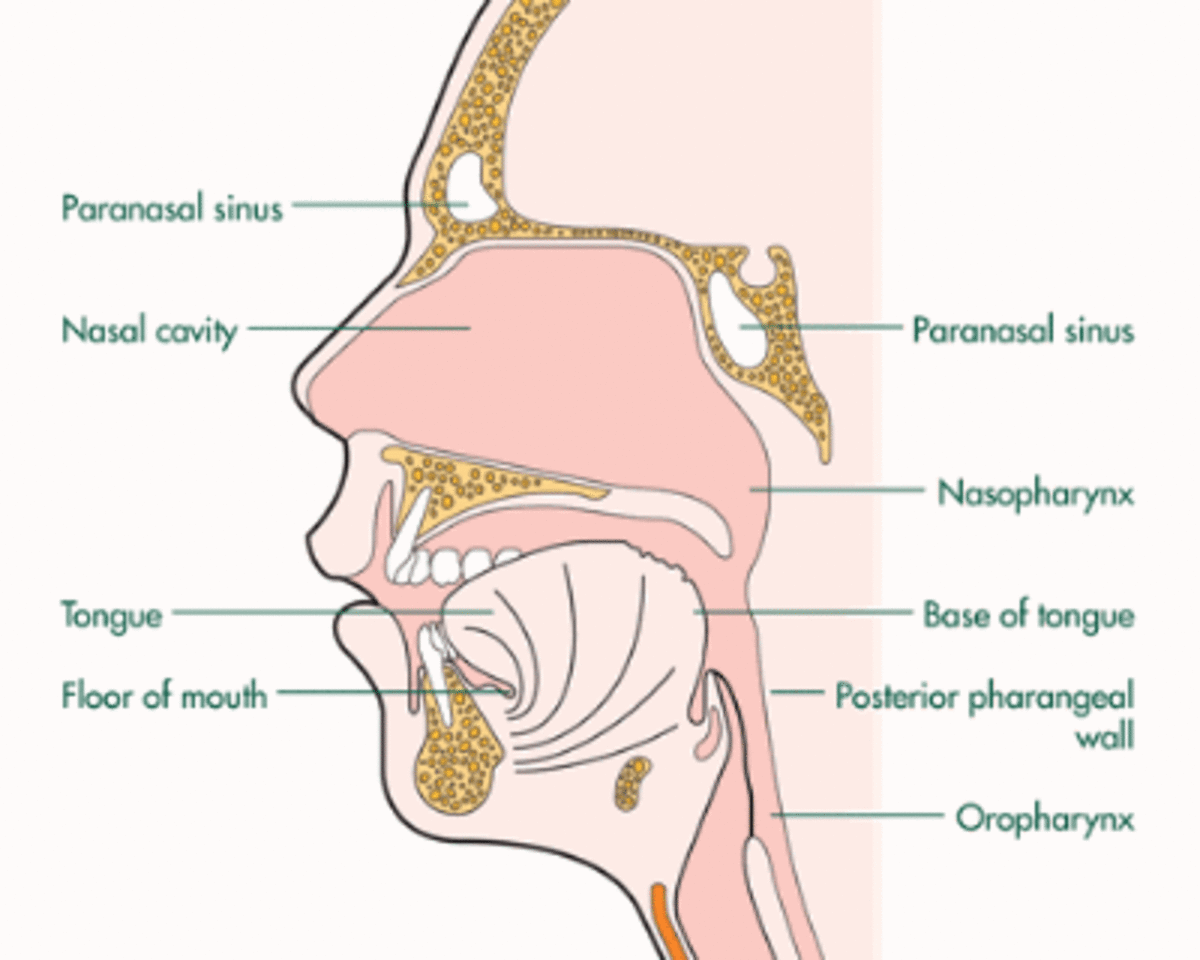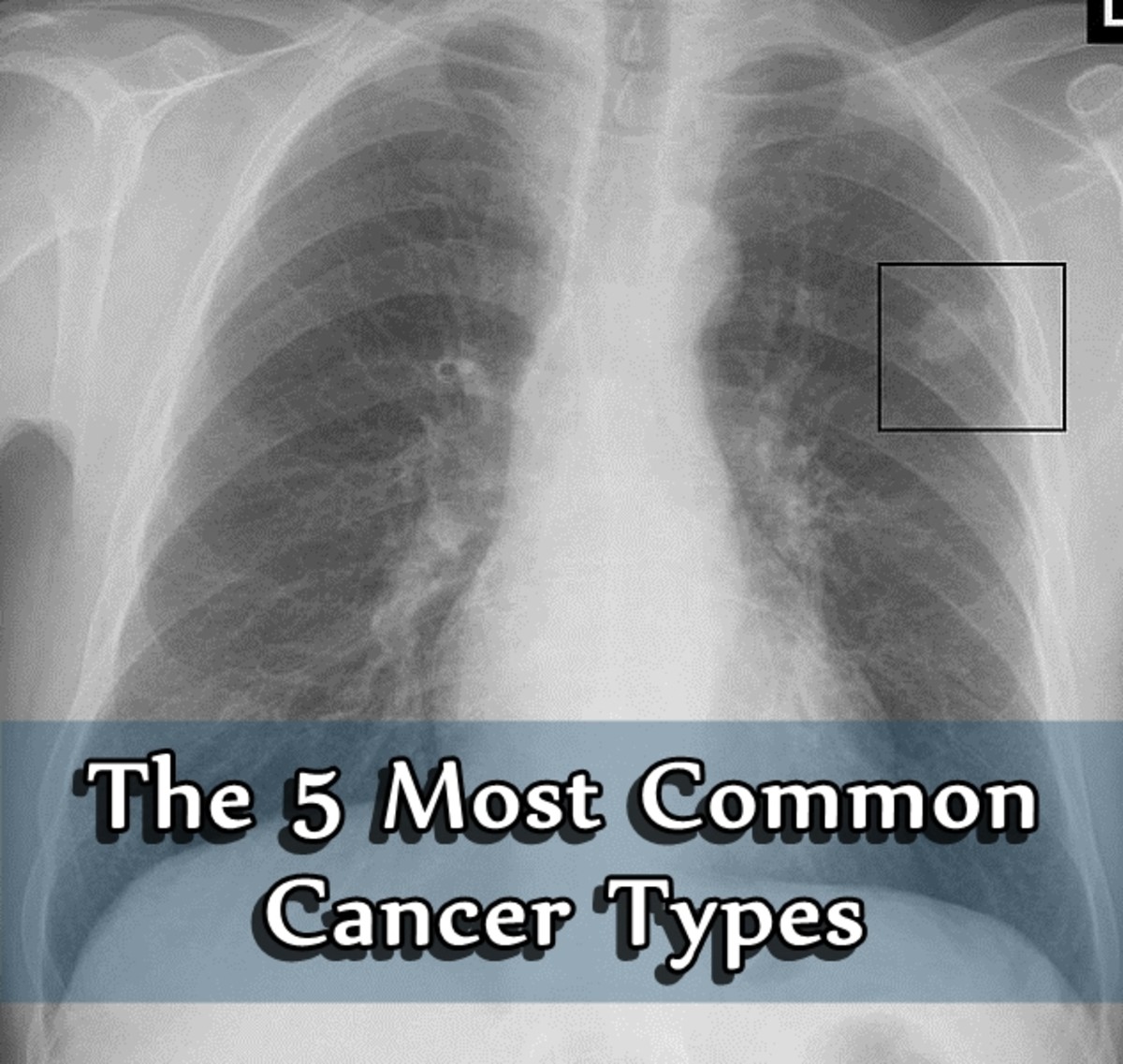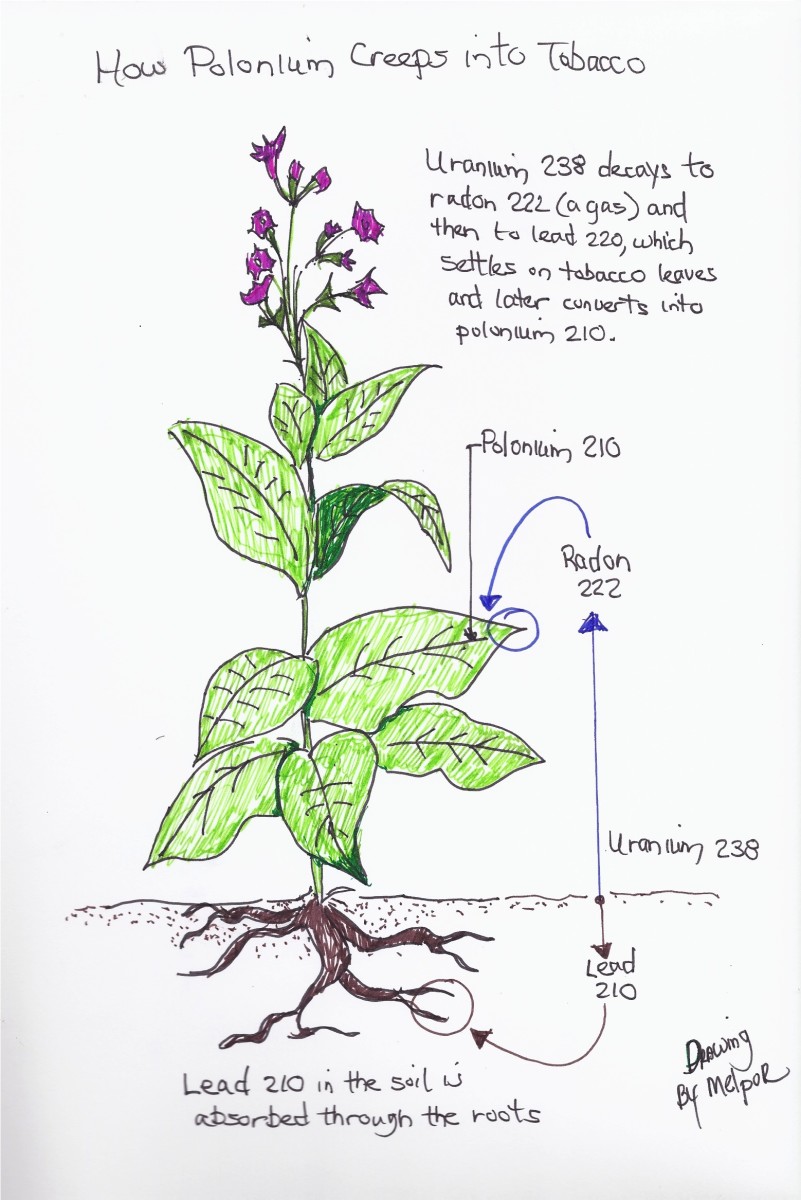Malignant and the Scary Cancers
Malignant might be the scariest word to everyone when we talk about health and health related conditions. In this article, I’ve complied and discussed all of the common malignant diseases and cancers that threaten our happy lifestyle. Know them and get rid of them before something turns to malignancy. Knowledge and prevention is always much better than cure. Before I forget, these are malignant diseases and conditions only associated to humans.
What is malignant?
What is meant by malignant really? How to know if something is malignant? When we hear the word malignant, it connotes cancerous while benign means non-cancerous. We see the term is most familiar as a description of cancer as malignant tumor is synonymous with cancer. According to wiki, malignancy is the tendency of a medical condition, especially tumors, to become progressively worse and to potentially result in death. In short, malignant is a serious stage of a worse disease or condition that is deadly and harmful. How to know if something is malignant or turned to malignant? There are different ways and symptoms to know if a disease is malignant or benign as there are different types of malignant diseases like that of a brain tumor or skin cancer; the brain must be scanned and examined while the skin must undergo biopsy. There are different symptoms to detect different malignant tumors as well. Each will be discussed below.
Malignant Neoplasm
What is malignant neoplasm? It is the medical term used to refer to cancer and tumors. Whereas "neo" means new and "plasm" refers to cells, hence the word neoplasm. It refers to abnormal overgrowth of cells rather than healthy new cell growth. Simply means malignant tumor or simply cancer.
Malignant Melanoma
Malignant melanoma is the deadliest type of skin cancer. It is associated with malignant and cancerous moles. According to Skin Cancer Foundation, melanoma is a malignant tumor that originates in melanocytes, the cells which produce the pigment melanin that colors our skin, hair, and eyes. The majority of melanomas are black or brown. However, some melanomas are skin-colored, pink, red, purple, blue or white. White people are prone to this type of cancer and those who are over-exposed to the UV rays of the sun and radiation. Melanoma can be cured successfully if treated earlier. How to treat and avoid melanoma? This complete article shows the treatment and prevention of this type of cancer. The photo below shows a comparison of malignant moles to non-malignant moles.
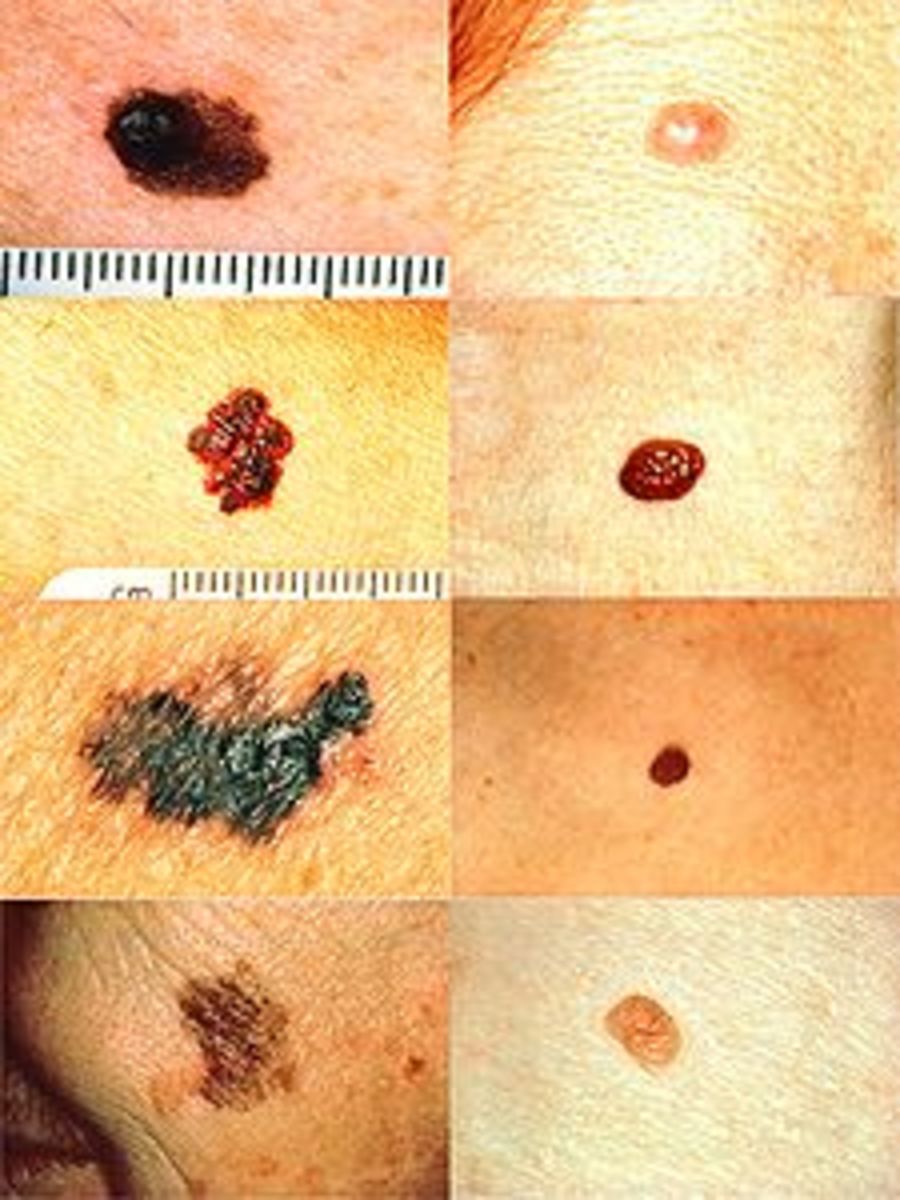
Malignant Lymphoma
Lymphomas are a group of cancers in which cells of the lymphatic system become abnormal and start to grow uncontrollably. Because there is lymph tissue in many parts of the body, lymphomas can start in almost any organ of the body according to healthline.co. These malignant cells often originate in lymph nodes, forming an enlargement of the node (a tumor). It is also refered as tumor of the lymph nodes. These types of cancer derived from lymphocytes, a type of white blood cell. Lymphoma is divided into two main kinds: Hodgkin's and non-Hodgkin's. Symptoms of lymphomas include anorexia or loss of appetite, unexplained weight loss, fatigue, nausea, vomiting, abdominal discomfort, and unexplained fever, breathlessness, night sweats, bone pains, indigestion, swollen glands in the neck, armpits, or groin area, congestion in the face, neck, and upper chest. Lymphomas can be treated and cured when discovered earlier just like the other malignant diseases and cancers. This link explains the complete diagnosis and treatment of lymphomas.
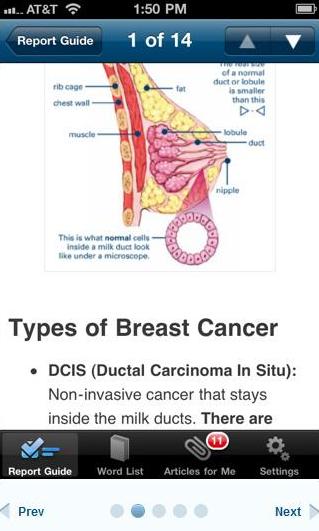
You can download the iphone app for free by going to this link: Breast Cancer Protection
Malignant Breast Cancer
Breast cancer or malignant breast neoplasm is the most common type of non-skin cancer in women and the fifth most common cause of cancer death. Breast cancer is an uncontrolled growth of breast cells according to breastcancer.org. It refers to a malignant tumor that has developed from cells in the breast.Usually breast cancer either begins in the cells of the lobules, which are the milk-producing glands, or the ducts, the passages that drain milk from the lobules to the nipple. In 2010, an estimated 207,090 new cases of invasive breast cancer are expected to be diagnosed in women in the U.S., along with 54,010 new cases of non-invasive (in situ) breast cancer. Women of other ethnic backgrounds — Asian, Hispanic, and Native American — have a lower risk of developing and dying from breast cancer than white women and African American women. According to the American Cancer Society, any of the following unusual changes in the breast can be a symptom of breast cancer:
- swelling of all or part of the breast
- skin irritation or dimpling
- breast pain
- nipple pain or the nipple turning inward
- redness, scaliness, or thickening of the nipple or breast skin
- a nipple discharge other than breast milk
- a lump in the underarm area
These changes also can be signs of less serious conditions that are not cancerous, such as an infection or a cyst. It’s important to get any breast changes checked out promptly by a doctor. A malignant breast tumor is life threatening and must be surgically removed and examined by a pathologist in order to stop from spreading to other cells into the bloodstream or lymph system of the other parts of the body like the bones, skin, lungs, liver and brain.
Prostate Cancer
Prostate cancer is a form of cancer that develops in the prostate, a gland in the male reproductive system so women are hundred percent safe from this. I’ve listed the symptoms of prostate cancer according to the prostate cancer foundation. It includes:
- A need to urinate frequently, especially at night
- Difficulty starting urination or holding back urine
- Weak or interrupted flow of urine
- Painful or burning urination
- Difficulty in having an erection
- Painful ejaculation
- Blood in urine or semen
- Frequent pain or stiffness in the lower back, hips, or upper thighs
You should consult with your doctor if you experience any of the symptoms above.
Because these symptoms can also indicate the presence of other diseases or disorders, such as BPH or prostatitis, men will undergo a thorough work-up to determine the underlying cause.
Prevention of prostate cancer includes avoiding fats and high calories, exercise, avoid stress and depression, eat more fish than meats, avoid taking more than 1,500 mg of calcium a day, eat a lot of broccoli, tomatoes, and cauliflower, avoid smoking, avoid over-supplementation with megavitamins and have a happy and wonderful life and love life.
Cervical Cancer
Cervical cancer is a disease in which malignant cancer cells form in the tissues of the cervix. Symptoms of this malignant disease may be absent until the cancer is in its advanced stages. Fortunately there are effective vaccines to avoid cervical cancer from happening. Vaccines are targeted at girls and women of age 9 to 26. Regular pap smear and screening are recommended to detect early discovery because early detection can save a life successfully. Cervical cancers are treated through surgery, chemotherapy, radiation, or removal of the uterus. You can avoid this type of cancer by eating veggies and fruits, have enough exercise to have a strong immune system, have safe sex and proper hygiene, and stop smoking.
Leukemia – Cancer of the Blood
Leukemia is the cancer of the blood or bone marrow that is described by an abnormal increase of white blood cells. It starts in the bone marrow, the soft tissue inside most bones. Bone marrow is where blood cells (white, red blood cells and platelets) are made. When you have leukemia, the bone marrow starts to make a lot white blood cells, called leukemia cells. These leukemia cells are unstoppable and can crowd out the normal blood cells in the body resulting to lack of blood platelets, which are important in the blood clotting process. This means people with leukemia may easily become bruised, bleed excessively, or develop pinprick bleeds. Over white blood cells could also overpower red blood cells resulting to red blood cell deficiency that leads to anemia. Leukemia cells can also spread to the lymph nodes or other organs of the body and can cause swelling or pain.
What causes leukemia? Radiation of course and certain chemicals such as benzene, some types of chemo from other cancer, smoking and genetic problems. Symptoms of leukemia include headaches, fever, night sweats, bone and joint pains, swollen or painful belly from an enlarged spleen, swollen lymph nodes in the armpit, neck, or groin, weight loss, loss of appetite, and lots of infections. This malignant condition is treated by chemotherapy, radiation and bone marrow transplant.
Malignant Lung Cancer
Malignant lung cancer refers to the malignant tumor in the lungs. It is the disease which consists of uncontrolled cell growth in tissues of the lung that may lead to metastasis, which is the invasion of adjacent tissue and infiltration beyond the lungs. Like any other cancers, this malignant lung tumor has different stages and different treatments. The main cause of getting this deadly disease is smoking cigarettes and tobacco, exposure to harmful gases and air pollution, and asbestos. Treatment is done by chemo, radiotherapy, and surgery. Symptoms of lung cancer include difficulty in breathing, coughing and coughing with blood, chest pain, hoarseness of voice, weight loss, over fatigue, loss of appetite, and repeated respiratory infections.
Malignant Glioma
Malignant glioma is a type of tumor that starts in the brain or spinal cord. It is called a glioma because it arises from glial cells. Symptoms of glioma include severe headache, memory loss, seizure, physical weakness, loss of muscle control, visual symptoms, language problems, cognitive decline, and personality changes. These symptoms may change, according to which part of the brain is affected. And the symptoms may happen after decades of exposure. This type of brain cancer are rarely curable sad to say. The excessive use of cell phones are said to cause this type of cancer but this has not been proven yet. According to the American Cancer Society, there are three types of gliomas:
Ependymomas make up about 2% of all brain tumors. These tumors come from the ependymal cells and because they do not spread into the normal brain tissue, some ependymomas can be cured by surgery. They rarely spread outside the brain.
Astrocytomas make up about 35% of all brain tumors and start in brain cells called astrocytes. Most of these brain tumors cannot be cured because they spread all through the normal brain tissue
Oligodendrogliomas make up about 4% of all brain tumors. These tumors spread in a similar manner to astrocytomas and usually cannot be cured with surgery.
Malignant Mesothelioma
Malignant mesothelioma, is a rare form of cancer that develops from the protective lining that covers many of the body's internal organs, the mesothelium. It is usually caused by asbestos exposure. In other words, it refers to asbestos cancer. Mesothelioma develops when asbestos airborne particles are inhaled or ingested and become lodged in the organs of the body. If you don’t want the risks, just stay away from asbestos and avoid using products with asbestos then you’ll be safe. Anywayz, medical professionals divide malignant mesothelioma into various types depending on which area of the mesothelium is affected according to asbestos.com:
- Pleural mesothelioma is the most common form of the cancer, affecting the lining of the lungs, called the pleura.
- Peritoneal mesothelioma is the second most common form of the cancer and develops in the lining of the abdomen, called the peritoneum.
- Pericardial mesothelioma develops in the membrane that surrounds the heart, called the pericardium.
- Testicular mesothelioma is the rarest form of the cancer and develops in the membranous lining surrounding the testicles, called the tunica vaginalis.
Treatment of malignant mesothelioma is done by surgery, radiation therapy, chemotherapy, photodynamic therapy, gene therapy, and immunotherapy. Prevention is always better than cure.
Malignant Hyperthermia
Like I said I don’t only talk about malignant diseases I’m also discussing malignant conditions here as well. Malignant hyperthermia is the rare life-threatening condition that is triggered by exposure to certain drugs used for general anesthesia. It is often discovered after a patient is given anesthesia during a surgical procedure. The patient will experience a rapid rise in body temperature (fever) and severe muscle contraction. Some cases causes sudden death. Malignant hyperthermia is inherited. Only one parent has to carry the disease for a child to inherit the condition. So it’s recommended to notify your doctors especially prior to surgery with general anesthetic. This is the best prevention for this type of malignant health condition.
It is known by a number of names, including malignant hyperthermia (MH), malignant hyperthermia syndrome (MHS), and malignant hyperpyrexia. This malignant condition can be treated upon attack and can be prevented from happening again in the future circumstances.
Malignant Hypertension
Malignant hypertension is a rare but very serious form of hypertension complication characterized by very elevated and high blood pressure, organ damage in the eyes like internal bleeding of the retinas in both eyes and swelling of optic nerves behind the retinas; severe damage in the brain occurs from increased intracranial pressure, such as headache, vomiting, subarachnoid, and cerebral hemorrhage; permanent kidney damage resulting in hematuria, proteinuria, and acute renal failure. The good news about malignant hypertension are: it is so rare and affects only about one percent of people with high blood pressure, it has a good projection if treated quickly. But the cruel damage it causes must be taken seriously. Symptoms of this malignant condition include:
- Blurry vision
- Chest pain
- Seizure
- Decreased urine output
- Weakness or strange tingling/numbness in the arms, legs, or face
- Headache
- Shortness of breath
**Lung photo from Pulmonary Pathology flickr photostream




